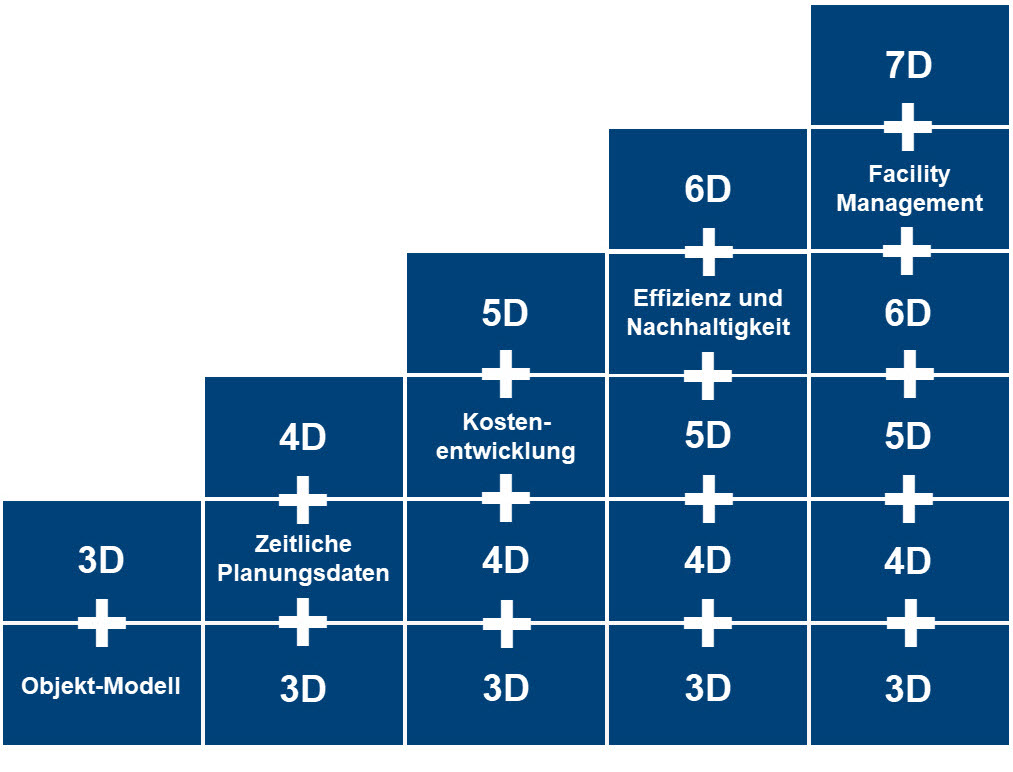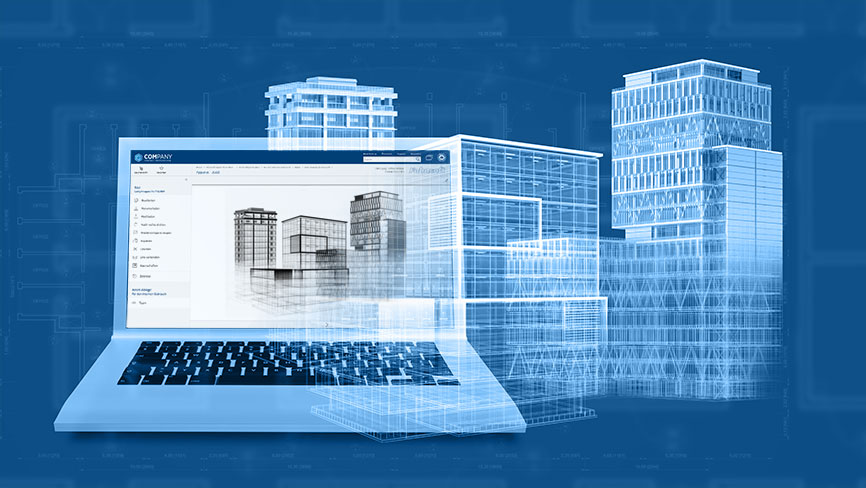In the first article of this blog series, "Boost BIM project efficiency by working in the cloud", I focused on how building information modeling (BIM) can expedite construction projects. In the next article, "Slash building times and construction costs with 3D, 4D, and 5D BIM dimensions", I touched on the relevance of the BIM model for larger scale construction projects. In this final article, I'll introduce the dimensions 6D (sustainability) and 7D (facility management) and provide some perspective on the future of the BIM model.
6D - Developing construction projects efficiently and sustainably
6D BIM expands the previous dimensions of the 3D object model (3D), the temporal planning data (4D), and the cost development (5D) to include two additional factors – efficiency and sustainability. For project partners, that means that in addition to the timetable and the cost plan, the primary focus is on targets relating to the sustainable development of the construction project.
In this regard, the sixth dimension starts providing support right from the initial planning phase by analyzing energy consumption, which in turn helps to predict the total costs of the building project. Ultimately, it's a matter of pinpointing the areas to invest in, with a view to achieving sustainability and cost efficiency.
7D - Holistic facilities management
The seventh dimension augments all of the preceding dimensions with further relevant data concerning the maintenance and upkeep of the construction project. This covers all of the information that’s necessary to ensure the ongoing operation of the facility. That can include things like technical specifications, maintenance and operating instructions, warranties, and manufacturer information.
BIM-based facilities management drives improvements in service provision throughout the lifecycle of the building project. As a result, the best possible quality is ensured even after the planning and construction phase has been completed.

Figure: The dimensions of the BIM model: Each additional dimension adds a further component.
nD - Additional dimensions resulting from a greater demand for information
Theoretically, adding even more dimensions to a BIM model is a conceivable scenario. It makes it possible to respond to the ever-increasing information requirements that accrue in the course of modern construction projects.
For instance, you can include safety aspects as an eighth dimension in the building design and construction process of a building or facility. Thanks to advances in digital project execution, the options in terms of new sources of information are virtually limitless.
Digitalization taps the full potential of the BIM model
A holistic BIM model that incorporates all of the relevant dimensions lends support in every phase of the construction project, from planning to construction to the actual operation of a building. This yields a series of benefits for the project participants, including improved location-independent communication, lower susceptibility to errors caused by premature analyses, greater planning reliability for complex projects, efficient information management, and time and cost savings that shouldn't be underestimated.
To be sure, BIM's true potential only really unfolds when everything is fully digitalized, right down to the construction sites themselves - for instance, by implementing a cloud-based technical data and documentation management system like Approve on Fabasoft PROCECO. Because of its common data environment (CDE), this solution makes it possible to actively involve external parties like suppliers in the construction process. Doing so creates a networked flow of information throughout the entire construction project, ensuring that everyone involved in the project has the same level of information at all times.
What's next for BIM?
Building information modeling has steadily gained ground in recent years, a development that is reflected not least in the fact that more and more clients in large-scale plant construction are requiring the use of BIM. Added to this are the broader requirements governing BIM, such as those introduced in Germany for publicly tendered infrastructure projects.
A PWC study from 2019 likewise substantiates this momentum. According to the study's findings, 79% of construction companies are planning to use BIM in the coming years. In addition, 60% of respondents stated that BIM had already been requested in tenders during the last twelve months.
All in all, a holistic BIM model combined with a cloud-based solution for technical data management and documentation management translates into more efficient construction projects and in turn, shorter construction times. Particularly in large-scale plant construction, BIM projects are set to gain significant importance in the near term. Digital support of this kind covering every phase of construction moves the possibility of a fully networked construction site well within reach.




